|
|
 |
|
October 29, 2011
As I rummaged through the wine cellar to pull together a charitable silent auction item appropriately dubbed "Holiday Bubbles" in the auction program, it suddenly occurred to me that with each bottle I chose I had a specific type of social event in mind.
.jpg) For the casual aperitif prior to an evening on the town, I reached instinctively for an inexpensive but delicious Italian prosecco. Thinking about serving savory appetizers in front of the fire on a crisp winter day, I went for an interesting Spanish cava. For the casual aperitif prior to an evening on the town, I reached instinctively for an inexpensive but delicious Italian prosecco. Thinking about serving savory appetizers in front of the fire on a crisp winter day, I went for an interesting Spanish cava.
As I conjured up a dressy, festive holiday buffet, I couldn't resist a non-vintage brut Champagne, and so on.
"Sparkling" is indeed a diverse category of wine, often encompassing wines with little in common other than the fizz. Just about every wine producing region in the world makes wine with bubbles.
So with that in mind, I will begin with the most basic — and misunderstood — fact about sparkling wine: All Champagne is sparkling wine, but not all sparkling wine is Champagne. To qualify as Champagne, a sparkling wine must be produced within the strict boundaries of the Champagne district northeast of Paris.
There is a tendency to call all bubbly "Champagne" no matter its origin, but that is simply not the case. Sparkling wines produced in other parts of France are typically labeled cremant, and the birthplace of all sparkling wine, the Abbey of St. Hilaire in southern France's Languedoc region, makes the superb blanquette de Limoux.
 Italy also is a prolific producer of bubbly, with everything from the sweet red sparkler, Brachetto d'Acqui (made in the Piedmont region, where Barolo and Barbaresco are the king and queen), to exquisite methode champenoise-style bubblies from Franciacorta, a region that lies between Milan and Venice in northern Italy. Italy is famous, too, for its sweet Asti spumante and prosecco, an increasingly popular sparkling wine from the Veneto region. Italy also is a prolific producer of bubbly, with everything from the sweet red sparkler, Brachetto d'Acqui (made in the Piedmont region, where Barolo and Barbaresco are the king and queen), to exquisite methode champenoise-style bubblies from Franciacorta, a region that lies between Milan and Venice in northern Italy. Italy is famous, too, for its sweet Asti spumante and prosecco, an increasingly popular sparkling wine from the Veneto region.
Spain has its cava, of course, and the rest of the world relies for the most part on the nomenclature of style, such as brut or extra dry — terms that define the sweetness level of the various sparkling wine styles.
There are still some sparkling wine producers in the U.S. market that insist upon calling their bubbly "Champagne," but that is now the exception rather than the rule.
In keeping with my observation that certain bubbly styles conjure, and consequently match up better, with certain types of social events, I have decided for the purposes of this exercise to group my sparkling wine preferences using just that model.
CASUAL APERITIF
There are numerous opportunities around the holidays to meet up with friends for a brief aperitif after work or a shopping tussle at the mall. For such casual and convivial encounters, prosecco, cava or any of the many cremant wines of France — cremant de Alsace, cremant de Loire, cremant de Limoux (a kissing cousin of blanquette de Limoux) — will serve you well.
These wines are light and easy, but hardly lacking in flavor or character when made well. They have the added benefit of being inexpensive relative to the cost of Champagne or any of the good California bubblies.
TAPAS
 While the cremant-style bubblies can certainly stand up to food, some dishes work best with bubblies that have firmer acid and a little more snap. So when serving savory tapas at a party or ordering in a restaurant, more structured sparkling wines will be more likely to handle the challenge with elan. While the cremant-style bubblies can certainly stand up to food, some dishes work best with bubblies that have firmer acid and a little more snap. So when serving savory tapas at a party or ordering in a restaurant, more structured sparkling wines will be more likely to handle the challenge with elan.
In that setting, I generally look to non-vintage California bruts and non-vintage brut Champagnes that fall below my price threshold for such occasions, which is about $40 retail, or $65 to $70 at restaurant prices.
If the tapas are both sweet and savory, I might also include "extra dry" bubbly in the mix, for the additional sweetness (indeed, extra dry is sweeter than brut) will match well with tapas that are either on the sweet side or meant to be dipped in a sweet sauce.
It should be noted that there are bone-dry sparkling wines, typically labeled "natural" or "brut zero," but without the dosage (a liqueur that is added at bottling to balance the wine and reduce the acid bite) these wines can be too sharp for many palates.
ELEGANT RECEPTIONS
Glitzy dress-up holiday parties might be the occasion to bring out more upscale non-vintage bruts, non-vintage rose Champagne (more expensive than a simple non-vintage brut) and perhaps even some vintage wines, either from Champagne, California, Italy or Spain.
Other countries have sparklers that might fit into this category, but they are not easily found unless you have access to a large wine market such as New York, Washington, D.C., or Los Angeles.
These bubblies will be more refined and complex, and definitely more compatible, with the more complicated appetizers served at fancy affairs. Rule of thumb: If caviar is being served, the bubblies should be a cut above, or what's the point?
SIT-DOWN DINNERS
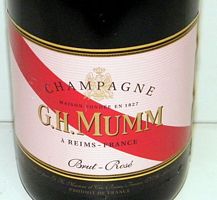 If you're ever going to serve vintage Champagne, tetes de cuvee Champagne or any of the prestige cuvees from California that run $50 and up, this would be the time. Structured, complex sparkling wines, particularly those that have been appropriately aged, can be a huge hit at the holiday feasting table. If you're ever going to serve vintage Champagne, tetes de cuvee Champagne or any of the prestige cuvees from California that run $50 and up, this would be the time. Structured, complex sparkling wines, particularly those that have been appropriately aged, can be a huge hit at the holiday feasting table.
I'm particularly fond of vintage rose Champagne with roasted game birds, but you would be surprised in general with how well vintage bubbly matches up with just about everything except bloody red meat.
SWEETS
Over the years, I've encountered too many fairly savvy wine enthusiasts who simply don't get sweet bubbly. If you fall into that camp, be aware there is a brave new (not really new) bubbly world out there, and it's worth experiencing, even if sweet wines are generally not your thing.
Sweet bubblies are meant to be paired with sweet things. Hence the affection Italians have for Asti spumante. In Italy, Asti spumante is served with cakes and cookies, and around the holidays the combination makes for sheer joy.
One of my favorite combinations is brachetto D'acqui with chocolate. Champagne with chocolate — unless the Champagne is a demi-sec — is a huge no-no, but brachetto d'Acqui and chocolate is as sublime as any wine and food pairing could ever be. The brachetto delivers a delicious burst of raspberry fruit that is simply magic with a chocolate sweet.
The beauty, too, of Asti spumante and brachetto and other demi-sec sparkling wines is that they tend to be much lower in alcohol. Brachetto often registers about 7 percent alcohol by volume. Most bruts, for example, check in at between 12.5 and 13.5 percent ABV.
RECOMMENDATIONS
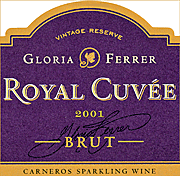 There are many excellent sparkling wine producers from which to choose, and you are almost always assured of a satisfactory experience if you choose a wine from an established Champagne house or a top California producer. There are many excellent sparkling wine producers from which to choose, and you are almost always assured of a satisfactory experience if you choose a wine from an established Champagne house or a top California producer.
To somewhat narrow the possibilities, my suggestions today are based upon sparkling wines I have tasted over the past 12 months at various wine competitions.
The big discovery for me in sparkling wine this year has been Sparkling Pointe, a producer from Long Island, N.Y. Sparkling Pointe had the top sparkling wine at the 2011 San Francisco Chronicle Wine Competition and placed two wines in the championship round of the Critics Challenge International Wine Competition. You might have difficulty finding Sparkling Pointe, however, unless you live on the East Coast.
 Another pleasant surprise was Vilarnau, a Spanish cava producer that won Platinum, Gold and Silver awards at the Critics Challenge with wines that retail for less than $20 each. Cavas from Freixenet and Segura Viudas also left their mark at the Sommelier Challenge in September, when Freixenet prevailed with the Best of Class cava. Another pleasant surprise was Vilarnau, a Spanish cava producer that won Platinum, Gold and Silver awards at the Critics Challenge with wines that retail for less than $20 each. Cavas from Freixenet and Segura Viudas also left their mark at the Sommelier Challenge in September, when Freixenet prevailed with the Best of Class cava.
The Champagne that impressed most in this year's competitions was G.H. Mumm with its non-vintage Brut Rose ($75), voted Wine of the Year at the 2011 Critics Challenge. Over the past few years, Champagne Mumm has made tremendous strides toward restoring an image that was tarnished somewhat by a lackluster decade or so of production.
From Italy, the proseccos Maschio and Caposaldo piled up the Gold awards at both the Critics and Sommelier Challenges, with wines that retail for $15 or less.
Domestically, the banner-winning wines have been Gloria Ferrer's vastly improved Royal Cuvee ($35) and the superb prestige cuvee from Domaine Carneros by Taittinger, Le Reve ($90). Both wines have performed consistently with numerous Gold and Platinum awards over the past year.
Follow Robert on Twitter at @wineguru.
Posted by Robert Whitley at 10:31 AM
|
|
October 22, 2011
 A tip of the hat to Dr. Vino for pointing out this bit of narcissism from the Sea Smoke winery in California's Santa Barbara region. Grand cru is a classification of vineyard, most notably in the Burgundy region of France. It is an official classification with historical underpinnings. A tip of the hat to Dr. Vino for pointing out this bit of narcissism from the Sea Smoke winery in California's Santa Barbara region. Grand cru is a classification of vineyard, most notably in the Burgundy region of France. It is an official classification with historical underpinnings.California has no such official classification for vineyards. Perhaps it should, but that is not the reality at the moment. To use the term grand cru is to mislead the consumer. The wine in the bottle is not from a grand cru vineyard.
What's more, if a ranking of Pinot Noir vineyards in California did exist, I doubt very much Sea Smoke's patch of land in the Sta. Rita Hills would be included. Sea Smoke enjoys a strong following among certain wine enthusiasts, but I've never thought the wines merited either the price or the attention.
Posted by Robert Whitley at 2:52 PM
|
|
October 21, 2011
Ordinarily a discussion of outstanding white wines from California's Central Coast would likely begin, and possibly end, with Chardonnay. After all, from Santa Babarba to Monterey there are thousands of acres of Chardonnay vineyards, making Chardonnay the vast region's most reliable money crop.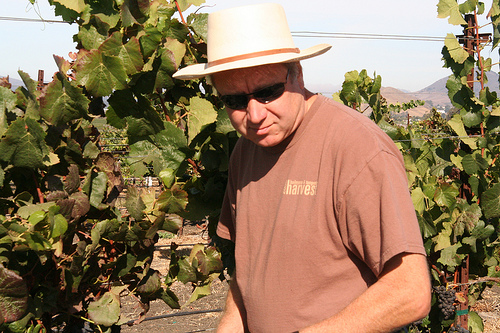 To be sure, Central Coast Chardonnay is a worthy wine. Yet I've recently indulged myself in a couple of unusual white blends that make me suspect the potential for great white wine in the Central Coast goes well beyond Chardonnay, no matter how good. To be sure, Central Coast Chardonnay is a worthy wine. Yet I've recently indulged myself in a couple of unusual white blends that make me suspect the potential for great white wine in the Central Coast goes well beyond Chardonnay, no matter how good.
The wines are the 2009 Trenza Blanco, Edna Valley and the 2010 Ranchero Cellars Chrome, La Vista Vineyard, Paso Robles. Trenza Blanco is a 50-50 blend of Albarino and Grenache Blanc; Ranchero Cellars Chrome a 70-30 blend of Grenache Blanc and Viognier. These are not blends you will find every day in the cellars of any California winery, though the world of California wine would be a better place if other wineries embraced the daring, innovative thinking of the two winemakers involved, Christian Roguenant (Trenza) and Amy Butler (Ranchero Cellars).
Christian, a native of France's Burgundy region who came to this country a couple of decades ago to make the ill-fated sparkling wine, Maison Deutz, has a long track record for both the skill of his winemaking and his willingness to experiment. He is the guiding hand behind the Tangent wines, including Tangent's outstanding Albarino, and also recently introduced a Gruner Veltliner under the Zocker label.
He also makes the Baileyana wines, which along with Trenza, Tangent and Zocker give the Niven Family of Paragon Vineyard fame one of the most impressive portfolio of brands in all of California. Not only do they make great wines at their Edna Valley operation, they dare put them in bottles with screwcap closures!
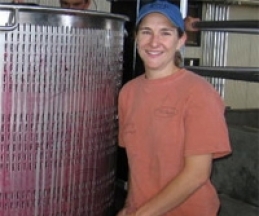 Butler's story is a bit more modest, but no less interesting. She is a specialist in the Rhone grape varieties and made numerous award-winning wines at Edward Sellers in Paso Robles before departing to start the Ranchero Cellars project. Butler's story is a bit more modest, but no less interesting. She is a specialist in the Rhone grape varieties and made numerous award-winning wines at Edward Sellers in Paso Robles before departing to start the Ranchero Cellars project.
She entered three of her wines -- Chrome, the 2009 Carignan "Old Vines" Columbini Vineyard, Mendocino County, and the 2010 Viognier La Vista Vineyard, Paso Robles -- in the Sommelier Challenge wine competition in September and won silver awards with both whites and a gold award for the Carignan.
All three wines rock, but I'm most enamored of the Chrome because it bolsters my argument, along with the Trenza Blanco, that the Central Coast has a very bright future in eclectic white blends, if only more winemakers would head down that path.
My recent review of the Trenza Blanco for WRO and the Creators Syndicate:
 Trenza, Edna Valley (Central Coast, California) 'Blanco' 2009 ($20): Trenza's blanco is a shining example of the potential for unusual grape varieties to do well in many of California's cool, coastal appellations. The grapes are unusual only in the sense that traditionally they have not been widely planted, if planted at all, in this country. This is a 50-50 blend of Albarino (the delicious white from the Rias Baixas district of Galicia in western Spain) and Grenache Blanc, a staple of the white wines of the southern Rhone Valley of France. The Albarino provides the zing, the Grenache blanc the heft. It's a lovely combo that shows aromas of red citrus, such as tangerine, and crisp pear. There is a flinty, edgy minerality throughout. I absolutely loved it. 94 Robert Whitley Sep 6, 2011 Trenza, Edna Valley (Central Coast, California) 'Blanco' 2009 ($20): Trenza's blanco is a shining example of the potential for unusual grape varieties to do well in many of California's cool, coastal appellations. The grapes are unusual only in the sense that traditionally they have not been widely planted, if planted at all, in this country. This is a 50-50 blend of Albarino (the delicious white from the Rias Baixas district of Galicia in western Spain) and Grenache Blanc, a staple of the white wines of the southern Rhone Valley of France. The Albarino provides the zing, the Grenache blanc the heft. It's a lovely combo that shows aromas of red citrus, such as tangerine, and crisp pear. There is a flinty, edgy minerality throughout. I absolutely loved it. 94 Robert Whitley Sep 6, 2011
Posted by Robert Whitley at 11:23 AM
|
|
October 19, 2011
In the on-going debates about contemporary wine styles, alcohol levels, and the like, one often hears it said that wine’s “traditional” place is at the dinner table. The implication of that claim is that today’s super-concentrated, highly-extracted wines don’t belong there. Brash neophytes, they violate cultured, time-honored conventions.
There’s some truth to that, but not nearly enough. The flamboyant style of high-alcohol, super-ripe wine (particularly red wine) that has taken the world by storm over the last couple of decades is certainly new. And for nearly two centuries, wine indeed has been at home when included as part of a meal. But wine is much older than that. For the vast majority of its 8,000 year history, it was something drunk all through the day, not just with food. It’s much more traditional place, then, is in the tavern or bar.
Wine only began to become associated with cuisine in the early nineteenth century, when a number of literary gourmands began writing and talking about dining in aesthetic terms. The most influential of these were two Frenchmen, Alexander Balthazar Laurent Grimod de la Reyniére (1758-1837) and Jean Anthelme Brillat-Savarin (1755-1829), both of whom promoted the appreciation of fine food and wine as comparable to the appreciation of painting, music, or verse. As Grimod argued, “the great art of dining” is quite different from the simple desire to sate hunger or thirst. Because the latter “can be appeased indiscriminately,” it is “fatal to art.” By contrast, dining involves taking the time to understand and care about what one eats and drinks. It is “a serious matter,” he wrote, and requires that one become “more refined in [one’s] taste.”
All through the 1800s, and for much of the next century as well, millions of people worked self-consciously to refine their tastes. Such refinement frequently involved acquiring new knowledge about and new experience with wine, especially the era’ s fine wines such as the classified growth Bordeaux châteaux, Champagnes, and late harvest Mosel and Rhine Rieslings. These were customarily drunk with meals, either in private homes or in that other early nineteenth century invention, restaurants. Wine’s cultural place thus became fairly narrowly prescribed. People drank other beverages in other places and at other times--beer or ale in a pub, for example, or coffee in a café, or whiskey before dinner; but wine belonged on the dinner table.
The great wine boom of the last thirty years has changed all that. People certainly still drink wine with meals, but they also increasingly drink it at other times and in other places--in bars, at cocktail parties, as a social lubricant rather than a food partner. And the kinds of wines they prefer are, not surprisingly, bolder, riper, and more forward than those Grimod or Brillat-Savarin enjoyed. That is the rarely discussed factor responsible for the rapid rise of interest in wine in America and beyond. It no longer is thought of exclusively or even primarily as a food beverage.
Whether or not wine’s changing cultural place is a good or bad thing is a subject for another time. But even a cursory glance at wine’s history makes it clear that this is nothing new. In fact, far from being untraditional, ripe, highly extracted wines that are best enjoyed on their own mark a return to a far older and more established tradition. Shakespeare’s Falstaff celebrates that tradition when, sitting in a tavern, he calls for Sack, a Renaissance Spanish wine made with dried grapes, so high in alcohol and richly concentrated. Sack produces “excellent wit” and “warms the blood,” he says, declaring it a “humane principle” to “forswear thin potations.”
Posted by Paul Lukacs at 7:49 AM
|
|
October 16, 2011
So you have a dream of someday planting a vineyard? There’s no doubt that this is a particularly appealing fantasy, especially this time of year when vineyards are ablaze with autumnal colors and the sun shines down on juicy, ripe grapes that are being gathered up by  happy, carefree grape pickers. Right? happy, carefree grape pickers. Right?
This cheerful image is actually more wine country marketing than the way things really are. The more likely truth is that harvest is often fraught with tension and all manner of worries. Will my entire crop be wiped out by hail? Will voracious birds swoop down and devour most of my grapes (talk to any citizen in migratory wine regions such as Long Island if you want to know what a menace hungry birds can be)? Will late rains dilute the juice, or are extraordinary heat waves going to cause the vines to shut down? What about powdery mildew, molds, freakishly early frost, or random wildfires that might give my grapes smoke taint?
With unpredictable weather patterns becoming the new norm everywhere in the world, I feel even greater pangs of sympathy for vineyardists as I read through some of the harvest reports that are coming in. In Washington state, for example, harvest began anywhere from one to two or more weeks later than usual, and estimates are that the 2011 crop could be down 15% or more due to an unusual freeze in November last year that caused serious damage to many vines. The 2011 growing year was notably cool until July, when temperatures shot up across the state and grape maturation accelerated. Thankfully, it never got scorchingly hot, with fewer 100-plus degree days than average in eastern Washington, which many think was a boon since vines often shut down in extreme heat.
The downside is that cooler temperatures can result in more mold in the vineyard throughout the growing season (several Washington growers privately believe that the mold is worse than any time in recent history: “It’s a good year to have stock in chemical companies,” one of them observed wryly). On the plus side, acidity levels seem to be better balanced than last year, when acid levels tended to be too high according to many wine growers. “This growing season will be challenging for anyone…who does not have a lot of tank capacity, as the harvest season will be fast and furious,” says Long Shadows winemaker Gilles Nicault
The Golden State has had its share of problems this year as northern California experienced unusually chilly weather and steady rains during much of the growing season. Crop loads have been greatly affected by this unfamiliar phenomenon. “Our Sauvignon Blanc yield is 60% of normal,” says Charles Krug Winery’s Peter Mondavi Jr. “We do expect other varieties to be light, but hopefully not this light.” If there is a bright side to this pattern, Lee Hudson, of Hudson Vineyards describes the harvest of Pinot Noir grapes destined for sparkling wine production: “It’s late, light and very tasty.” The grapes are “historically small,” he says, “resulting in low yields and incredible concentration.”
In New York, the harvest began during the warm, sunny days of early September, fueling feelings of optimism for another vintage as splendid as 2010. But then came Hurricane Irene, followed by Tropical Storm Lee, each of which dumped way too much water on vineyards across the state. As the harvest moves forward, however, some New York vintners express a sense of cautious hopefulness. Several Long Islanders, for example, report that thanks to very high summer temperatures sugar levels tend to be fairly high.
Meanwhile, in England, a rare October Indian Summer is said to be leading to a “vintage to be treasured.” Guy Tresman, of Chapel Down Wines notes that sugar levels are up, while acidity--often the plague of cool climate viticulture—is reduced thanks to the unexpected sunshine. “Last year picking took place in lashing rain, today they’re all out in tee-shirts.”
Well, as the New York Wine & Grape Foundation, a non-profit marketing and lobbying organization, reminds us: “Wine is farming, and Nature is in charge. That, in fact, is why wine labels contain vintage dates.”
Posted by Marguerite Thomas at 12:58 PM
|
|
October 15, 2011
You wouldn't ordinarily think value when seeking a wine recommendation from a professional sommelier. After all, they dwell in the rarefied air of Napa Valley cult wines, trendy Garagiste Bordeaux and the occasional 100-point bottle that would surely make you gasp at the price.Of course, that's the stereotype. The reality is somewhat different. The wave of hip, young sommeliers now managing large wine inventories in top-notch restaurants from New York to San Francisco has grasped the art of the deal. For proof, thumb through the wine list the next time you dine out and order the least expensive bottle.
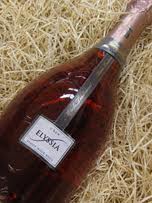 You might be surprised. It has been my experience that the best sommeliers pride themselves on discovering inexpensive gems. That was so true at the recent Sommelier Challenge International Wine Competition in San Diego. To be sure, big-ticket wines such as Parallel Estate Cabernet Sauvignon ($135), Chateau St. Jean Cinq Cepages ($75) and Archery Summit Pinot Noir ($100) swept their share of the awards, but there were an impressive number of winners that retail for $20 or less. You might be surprised. It has been my experience that the best sommeliers pride themselves on discovering inexpensive gems. That was so true at the recent Sommelier Challenge International Wine Competition in San Diego. To be sure, big-ticket wines such as Parallel Estate Cabernet Sauvignon ($135), Chateau St. Jean Cinq Cepages ($75) and Archery Summit Pinot Noir ($100) swept their share of the awards, but there were an impressive number of winners that retail for $20 or less.
One judge, Lisa Redwine, wine director at both the Marine Room and The Shores in La Jolla, Calif., enthusiastically confided in me that her panel had tasted several outstanding Spanish cavas. The significance is that Redwine understands that most cava is not very expensive by sparkling wine standards. Didn't matter; she loved them.
This aroused my curiosity in what I would consider the "value" winners from the 2011 Sommelier Challenge. There are too many of these wines to comment on each one individually, so I have culled out a number of those that I personally found interesting and that I believe might be easily sourced.
The largest group of value winners came from Italy, which immediately got my attention because Italian cuisine is such an important segment of our restaurant culture.
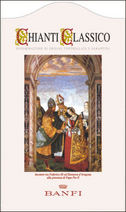 Banfi was a huge winner with four medals for its inexpensive lineup of Chianti and red Tuscan blends that retail between $11 and $18. The 2008 Centine Rosso ($11) and 2007 Chianti Classico Riserva ($18) are personal favorites. Cecchi scored a Platinum Award with its 2008 Chianti Classico ($13) and a Silver with its 2009 Bonzio Sangiovese di Maremma ($9). Banfi was a huge winner with four medals for its inexpensive lineup of Chianti and red Tuscan blends that retail between $11 and $18. The 2008 Centine Rosso ($11) and 2007 Chianti Classico Riserva ($18) are personal favorites. Cecchi scored a Platinum Award with its 2008 Chianti Classico ($13) and a Silver with its 2009 Bonzio Sangiovese di Maremma ($9).
Ruffino, which won Best Chianti with the 2007 Riserva Ducale Chianti Classico ($24.99), took three additional awards with wines that retail for less than $12 a bottle.
And anyone looking for tasty but inexpensive bubbly for the holidays can quench that thirst with either the Maschio Brut Prosecco ($13), which won a Gold Award, or the Caposaldo Prosecco DOC ($15), which won a Silver. Caposaldo also won Gold for its Chianti and Pinot Grigio, both at $10.
The most medaled wines among the bubblies, however, were the cavas. Freixenet walked off with the award for Best Cava with its Elyssia Pinot Noir Brut Cava ($18), and three other medals, including two Golds.
Segura Viudas had a Platinum winner with its Aria Brut Cava ($14) as well as a Gold and Silver award for its Aria Pinot Noir Brut ($14) and Brut Reserva Heredad ($20).
Value in the southern hemisphere was well represented by Australia's Wakefield winery, from the Barossa Valley, which took eight medals, seven of those with wines that retail for $16.99 or less. It won Gold with its 2010 Clare Valley Riesling, 2009 South Australia Chardonnay and 2008 Clare Valley Shiraz, all priced at $16.99.
Argentina had a tremendous value wine in the Amalaya 2009 Vino Tinto de Altura, Valle Calchaqui ($17), which won a Platinum Award. New Zealand achieved nice value wins with a Gold for the Starborough 2010 Savignon Blanc, Marlborough ($13) and a Silver for the 2008 Boro Hills Pinot Noir, Central Otago ($9.99). Chile scored with a Silver for the Emiliana 2010 Natura Sauvignon Blanc, Valle de Casablanca ($9).
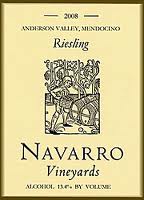 On the domestic front, I was pleased to see Alma Rosa take a Silver with its 2009 Chardonnay, Santa Barbara County ($19). Don't let the screw cap fool you; this is a first-class wine from the legendary vintner, Richard Sanford. On the domestic front, I was pleased to see Alma Rosa take a Silver with its 2009 Chardonnay, Santa Barbara County ($19). Don't let the screw cap fool you; this is a first-class wine from the legendary vintner, Richard Sanford.
The most impressive performance by a domestic winery, in terms of value, was turned in my Navarro Vineyards of Mendocino County. Navarro is a family run winery in Mendocino's Anderson Valley that has a long track record for quality wine at a reasonable price.
Navarro won five awards, including Best Riesling with the 2010 Anderson Valley Riesling ($18), and three Gold Awards (Muscat Blanc, Gewurztraminer and Pinot Gris), all from the 2010 vintage and all priced at $19.
Estancia, located in Monterey County, picked up six awards, including Gold for its 2009 Pinnacles Ranches Chardonnay ($11.99). Estancia's five Silver winners (for Cabernet, Merlot, Pinot Noir, Pinot Grigio and Sauvignon Blanc) range in price from $11.99 to $15.99.
Having tasted almost all of these winning wines myself, the bottom line for me is that the Sommeliers pretty much got it right, regardless of price.
Complete results, including many more exceptional value winners, can be found at SommelierChallenge.com.
Follow Robert on Twitter at @wineguru. To find out more about Robert Whitley and read more of his Wine Talk columns, visit the Creators Syndicate website at Creators.com.
Posted by Robert Whitley at 10:02 AM
|
|
October 9, 2011
We enjoyed two absolutely delicious Italian reds from my cellar last night.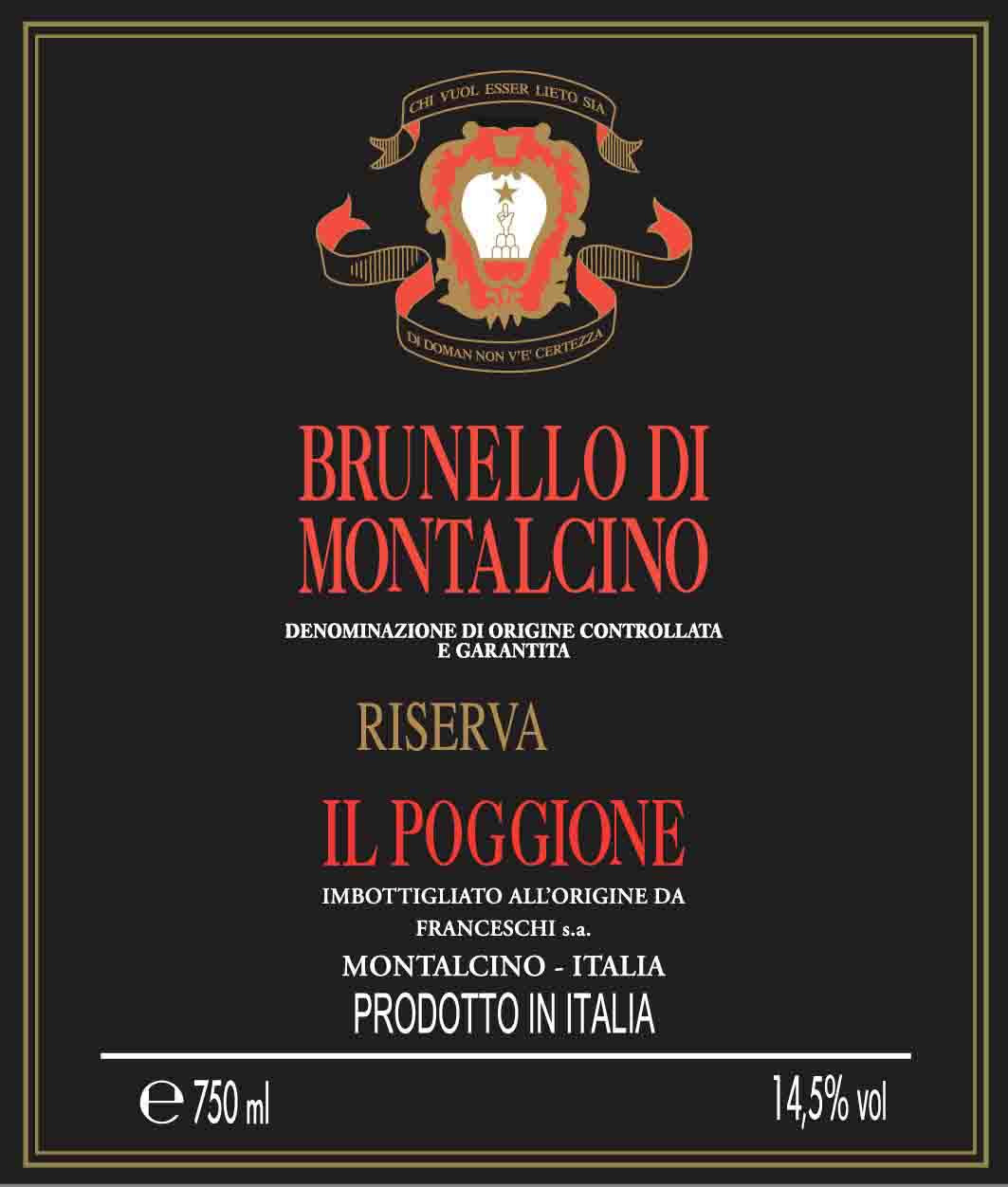 I took a 1998 Il Poggione Brunello Riserva and a 2000 Masi "Costasera" Amarone to dinner at Enoteca Davanti in San Diego's Little Italy. I took a 1998 Il Poggione Brunello Riserva and a 2000 Masi "Costasera" Amarone to dinner at Enoteca Davanti in San Diego's Little Italy.
The Il Poggione, one of my favorite Brunellos, was spectacular from the first sip, while the Masi Amarone needed a bit of aeration to open up and show its stuff.
Both wines have been stored for years at 59F in one of my refrigerated wine cabinets. They were in pristine condition and could have gone another decade or more, at least. The longevity of Amarone is an accepted fact: These are big wines that require time in the cellar to be tamed.
Wines made from Sangiovese, such as Brunello, are not as widely recognized for their ability to age. I know better because for years it was my ritual to order a bottle of the 1957 Ruffino Riserva Ducale Oro, a Chianti Classico, from the amazing cellar at Bottega del Vino in Verona, during the annual VinItaly wine fair. The well-aged Chianti was always superb, even 50 years on.
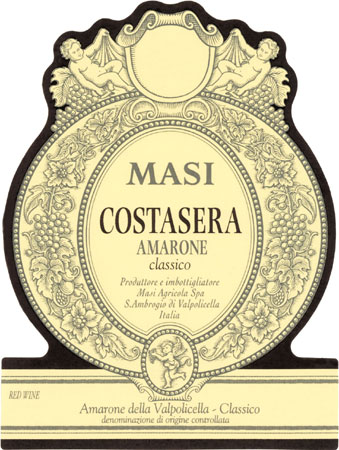 Brunello di Montalcino offers serious wine collectors tremendous value in cellar-worthy red wine, as the Il Poggione Riserva from the less-than-heralded 1998 vintage demonstrates. In fact, I would submit that the '98 vintage in the Montalcino region is vastly underrated, in some part because it followed the legendary 1997 vintage. Brunello di Montalcino offers serious wine collectors tremendous value in cellar-worthy red wine, as the Il Poggione Riserva from the less-than-heralded 1998 vintage demonstrates. In fact, I would submit that the '98 vintage in the Montalcino region is vastly underrated, in some part because it followed the legendary 1997 vintage.
The key pairings for each wine were a creamy polenta topped with a savory ragu made from braised pork shoulder with the Il Poggione Brunello, and an assortment of five Italian cheeses served with the Amarone for the finale to the evening.
Posted by Robert Whitley at 1:10 PM
|
|
October 7, 2011
It is always with a great deal of anticipation that I select an older bottle of wine from my cellar. After all, I’ve resisted the temptation to open it until I believe it has reached maturity, and my expectation is that the experience will be well worth the wait.
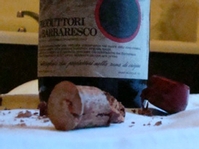 It was thus one recent evening when I put my hands on a 1996 Cabernet Sauvignon made by the late David Lake from the Columbia Winery’s Otis Vineyard. Lake’s Syrah had amazed me in the past when it had a bit of age, and I figured the same would be true of his older Cabs. It was thus one recent evening when I put my hands on a 1996 Cabernet Sauvignon made by the late David Lake from the Columbia Winery’s Otis Vineyard. Lake’s Syrah had amazed me in the past when it had a bit of age, and I figured the same would be true of his older Cabs.
I cut away the foil cap and inserted the screw in an attempt to extract the cork. I gave the lever a healthy yank and to my utter horror the cork crumbled before my eyes. There would be no way to remove the cork except to dig it out, leaving a coating of crumbled cork floating on the surface of the wine.
Two things came immediately to mind. First: What a mess. Second: What about the wine?
Dried out corks that either break in half or crumble are not all that rare, especially in bottles more than ten years old. Even high-end wines have this problem, on occasion. Some producers of top Bordeaux or iconic wines such as Penfolds Grange periodically offer to re-cork older bottles.
Should you encounter a bad cork, while it can certainly be messy, there is no need to panic. You will need a decanter and a funnel, and with any luck the wine might still be in good condition.
I use a funnel for such occasions. It is made specifically for wine and has a strainer to catch pieces of cork and sediment. However, you can use any standard kitchen funnel and strain the odd bits and pieces of cork through a tea strainer or a clean piece of cheesecloth.
What causes the problem is anyone’s guess. Corks sometimes dry out because the wines haven’t been stored properly, but that wouldn’t have been the case with my Columbia Winery Cab.
Sometimes, a winery simply gets a bad batch of corks.
What’s important, however, is having a work-around if this happens to you. All you need is a funnel, a strainer and a decanter, and then you’re in business. It worked for me, and the wine was beautiful.
Indeed, it was worth the wait.
Posted by Robert Whitley at 11:05 AM
|
|
October 5, 2011
It’s hardly groundbreaking news that technology has changed the way we deal with, well, almost everything, but it has surprised me to learn just how much contemporary viticulture is influenced by technological gadgets and expertise. My first glimpse of this post-modern industrial transformation was several years ago, when I happened to visit a new Hermann Weimer vineyard in the Finger Lakes that had been planted with the help of GPS technology.
Today the use of lasers or GPS guided gear for laying out vineyards is widespread. The machines, which are credited with offering much greater control and efficiency, can plant up to 20,000 vines a day at precise distances from one another. But things get even more hi-tech. At California’s Jordan Estate, for example, viticulturist Brent Young remembers the not-so-long-ago days when he and winemaker Rob Davis would assess the ripeness of the fruit as they strolled through the vineyard every autumn popping grapes into their mouths. “We could walk along a row and taste flavor changes in the grapes between individual vines,” he recalls. They would tie ribbons around the vines that produced grapes with the herbaceous characteristics Davis doesn’t like in order to separate those clusters from the ones that yielded the dark fruit flavors and ripe tannins he favors.
Consulting with a soil scientist, Young dug 40 soil pits, each 3-5 feet deep, and used high tech equipment to identify and analyze the textures, colors and other factors that characterized the overall makeup of the soils in the different pits. The blocks were also analyzed to determine how evenly water is distributed throughout the vineyard. The findings were “eye-opening,” says Young. “A vineyard that might have been farmed as a single block five years ago actually needs to be managed as three individual blocks to achieve consistency of flavors.”
GPS systems are increasingly being used in vineyards everywhere in the world to manage countless factors including elevation and trellising styles as well as soil components and irrigation patterns. GPS can help identify areas in the vineyard that may need treatment for leafhoppers or other pests. Using GPS with a handheld computer or PDA coupled with aerial imagery, vineyards can be evaluated for vine vigor. That imagery is then used during harvest, with GPS identifying specific blocks based on vigor index (fruit from low vigor vines typically goes into higher quality wines, while grapes from more vigorous vines are generally used for lower priced product). After harvest, that same information will be used in managing the vineyard the rest of the season.
No one believes that technology will replace going into the vineyard to observe vines and taste grapes. And according to current thinking, a vineyard cannot be properly irrigated by just looking at the soil--visual observation needs to be correlated with data sensors and other technical devices. I am certainly not suggesting that these tools that were once thought of as futuristic have led to better tasting wines--that is a topic for another day. But there is little doubt that, as its proponents affirm, technology has made viticulture extremely efficient, accurate and cost-effective. And to think that just a short time ago I was under the impression that the main purpose of a GPS was to help us find the closest wine shop.
Posted by Marguerite Thomas at 9:59 AM
|
|
October 2, 2011
Once upon a time, Burgundy was the wine aficionados reached for when they visited their favorite wine merchant. Back in the day, very few grocery stores could legally sell wine, so there really were honest-to-goodness wine merchants.
It was a time when French wine ruled the retail shops, and Burgundy was considered pure poetry by those who fancied themselves in the know. Then California happened, followed by Australia. New Zealand wines were sizzling for a while, and now it's Spain and Argentina. Everyone seems to be looking for the best new thing.
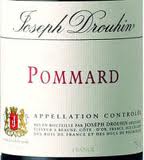 But here's a flash. Burgundy is back, thanks largely to consecutive vintages — 2009 and 2010 — that are not only very good, but also not as expensive as you might imagine given the weakness of the dollar. The Burgundies of 2009 are just now hitting the stores. But here's a flash. Burgundy is back, thanks largely to consecutive vintages — 2009 and 2010 — that are not only very good, but also not as expensive as you might imagine given the weakness of the dollar. The Burgundies of 2009 are just now hitting the stores.
The problem — and it's the only problem — is that the new wine consumer barely knows that Burgundy is the home of pinot noir and chardonnay, let alone the esoteric classifications that serve as the guide to quality and price.
So it seems that with these two outstanding vintages just beginning to be commercially available, a few basic observations on Burgundy might be in order.
CLASSIFICATIONS
Grand cru is the top tier of wine in Burgundy. Grand cru wines come from the best vineyards in the top villages. They are rare and expensive, even in vintages that are not as highly regarded as 2009 and 2010. The next level down is premier cru. From a good producer in an outstanding year these wines are almost always superb, if not downright spectacular. In fact, a handful of premier cru vineyards are consistently on par with nearby grand cru vineyards and probably should be upgraded, but that will never happen because of the nature of the political landscape.
The next level is the village wine. These wines come from vineyards that surround specific villages, and thus take the village name. Many of Burgundy's best and most enlightened producers often blend grapes from their premier cru vineyards into their village wines to improve the quality, which makes village wine perhaps the best value in Burgundy, particularly in good vintages.
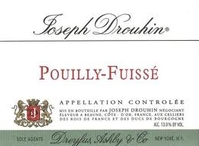 The most basic level of Burgundy is Bourgogne, which can be a blend of grapes from anywhere in the region. Most Bourgogne is inexpensive and generally regarded as the entry-level Burgundy for those who need an introduction to the earthy qualities that distinguish Burgundy from many New World pinot noirs and chardonnays. The most basic level of Burgundy is Bourgogne, which can be a blend of grapes from anywhere in the region. Most Bourgogne is inexpensive and generally regarded as the entry-level Burgundy for those who need an introduction to the earthy qualities that distinguish Burgundy from many New World pinot noirs and chardonnays.
REGIONS
Burgundy is vast and diverse, with a hierarchy that is based on place. Chablis is the northernmost district, about an hour south of Paris, and produces a flinty, minerally white wine that is renowned for the absence of oak in the production of the region's wines. That is slowly changing, although oaked Chablis is primarily the domain of Chablis from grand cru vineyards. The Cote d'or is the most important corridor in Burgundy. It runs north-south and encompasses what are considered Burgundy's two most influential districts, the Cote de Nuits and Cote de Beaune. Generally speaking, the Cote de Nuits is most famous for red and Cote de Beaune most famous for whites, though the Cote de Beaune does boast a couple of villages — Volnay and Pommard — that are quite famous for red wine.
The reds and whites from the Cote Chalonnaise and the whites from Maconnais, both regions south of Beaune, produce solid wines that are reliably good, of not necessarily on par with the wines of the Cote d'Or.
Still further south, not far from Lyon, lies Beaujolais, where the grape is gamay rather than pinot noir, and the wines are lighter and fruitier, meant to be consumed relatively young and fresh.
BUYING STRATEGY
In good vintages, the premier cru and village wines of Burgundy offer ordinary folk an opportunity to purchase cellar-worthy Burgundy at modest prices.
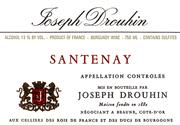 These wines age remarkably well and improve as the firm acids and hard tannins that are typical of young red Burgundy soften over time. White Burgundy tends to flesh out and gain palate weight as it ages, developing intriguing flavor complexity along the way. These wines age remarkably well and improve as the firm acids and hard tannins that are typical of young red Burgundy soften over time. White Burgundy tends to flesh out and gain palate weight as it ages, developing intriguing flavor complexity along the way.
I wouldn't hesitate to purchase village wines from the 2009 and 2010 vintages of Burgundy. They will be good to drink young and should be fairly sensational upon reaching maturity. This is where the value is. That said, many of the premier cru reds, which I tasted extensively at the Hospices de Beaune in November 2010, are impressive wines that are certainly collector or special occasion worthy.
There will be values at the premier cru level as well because, frankly, the strongest global demand for Burgundy is in the high-dollar-value grand cru wines, which get sucked up by rich collectors, Michelin-grade restaurants and the ever voracious Asian market.
To get you started, on the WRO Reviews page I've recommended a few village wines from Joseph Drouhin, a top Burgundy negociant. They are the best evidence I can present that Burgundy is not only back, but at a fair price, too.
Posted by Robert Whitley at 10:11 AM
|
|
October 1, 2011
I have only two hard and fast rules when it comes to tasting wine. The first is never scoff. The second is that there are no other hard and fast rules other than rules No. 1 and No. 2.
These rules have never been more important than they are today because of the growing divide among wine enthusiasts about what qualities personify a good wine. The answer to that question used to be whatever Robert Parker, the notorious wine critic, or the Wine Spectator, the most impactful of the major wine magazines, liked.
Of course, for thinking consumers that was never the case. But most consumers don't really want to think when they're shopping the wine aisles at the grocery store, at least not much beyond the price and the fact that a wine might have third-party endorsements — newspaper column recommendations, wine competition medals or an impressive score from a known wine critic — that help it stand out from the sea of choices.
What has changed in recent times is the level of confidence with which consumers now make their buying decisions. Whether it's because of the Internet and the rise of wine blogging, or the remarkable growth of the business in wine bars that offer eclectic alternatives to the conventional wisdom on what tastes good, the mood of the wine consumer has changed.
There is significant pushback now away from the rich, bold and powerful wines that are favored by the likes of Parker and Wine Spectator. There is an entire movement that has coalesced around the notion of "natural" wine, or wines made with minimal intervention by the hand of the winemaker.
So I was more than a little curious when I was invited last week to a coming-out party for a local wine made in the rolling hills east of San Diego. The wine, Los Pilares, is a blend of 50-percent Carignan and 50-percent Grenache. The owners — Michael Christian, Coleman Cooney, Jay McCarthy and Pelin Thorogood — were very excited.
I imagined they were much like the growing cadre of natural wine producers you might find elsewhere across the United States: passionate, dedicated to their ideals, disgusted with the direction modern wines have taken and completely and utterly convinced their take on wine is righteous and likely the wave of the future.
I would never scoff at their dreams and ambitions, but I did come away with a few observations.
To begin, their wine was decent and pleasant to drink. It was made without the use of oak, and the addition of sulfites (a natural wine preservative) was kept to a minimum. I found the wine to be a bit under-fruited, but it wasn't green or vegetal. It exhibited good acidity with a trace of minerals. It will no doubt shine its best when enjoyed with food.
Is it a great wine? No. Does it have the potential for greatness? No.
As more than one of the owners explained, the inspiration for a local wine made in a minimalist fashion was taken from the European model of simple homemade wines made for personal consumption. I was reminded of one of my earliest experiences lodging and dining at an agritourismo in Tuscany.
We drank the wine from the farm, which was made in the old days simply for family consumption.
The wines were interesting initially, but after a couple of nights I finally asked for the list of wines stored in the cellar of the farm. These were commercial wines, Chiantis and Brunellos, and they were a sight for sore eyes. I must confess, I never returned to drinking the homemade wines during the rest of my stay.
While I do think the Los Pilares was far better than most of the homemade wines I've drunk in France or Italy, I can say with a degree of certainty that I'm not ready to forgo the top wines from great producers that are aging slowing in my cellar.
There is no right or wrong here. I happen to be ecumenical and enjoy wines produced in myriad styles. But if you like the blockbuster, that's perfectly fine. When I come across a blockbuster wine that I find impressive, I will be sure to share the info with you. Or if you prefer wines of more modest dimensions, so be it. When I find a delicate wine that speaks to me, I will certainly pass along the recommendation.
I am in neither camp. I can see the lines have been drawn and each side believes it is on the right side of what is good and right. As for me, I will continue to blur the lines. For as soon as you make a hard and fast rule about what you like, you will surely taste a wine that is the exception.
Posted by Robert Whitley at 1:06 PM
|
|
 |
|